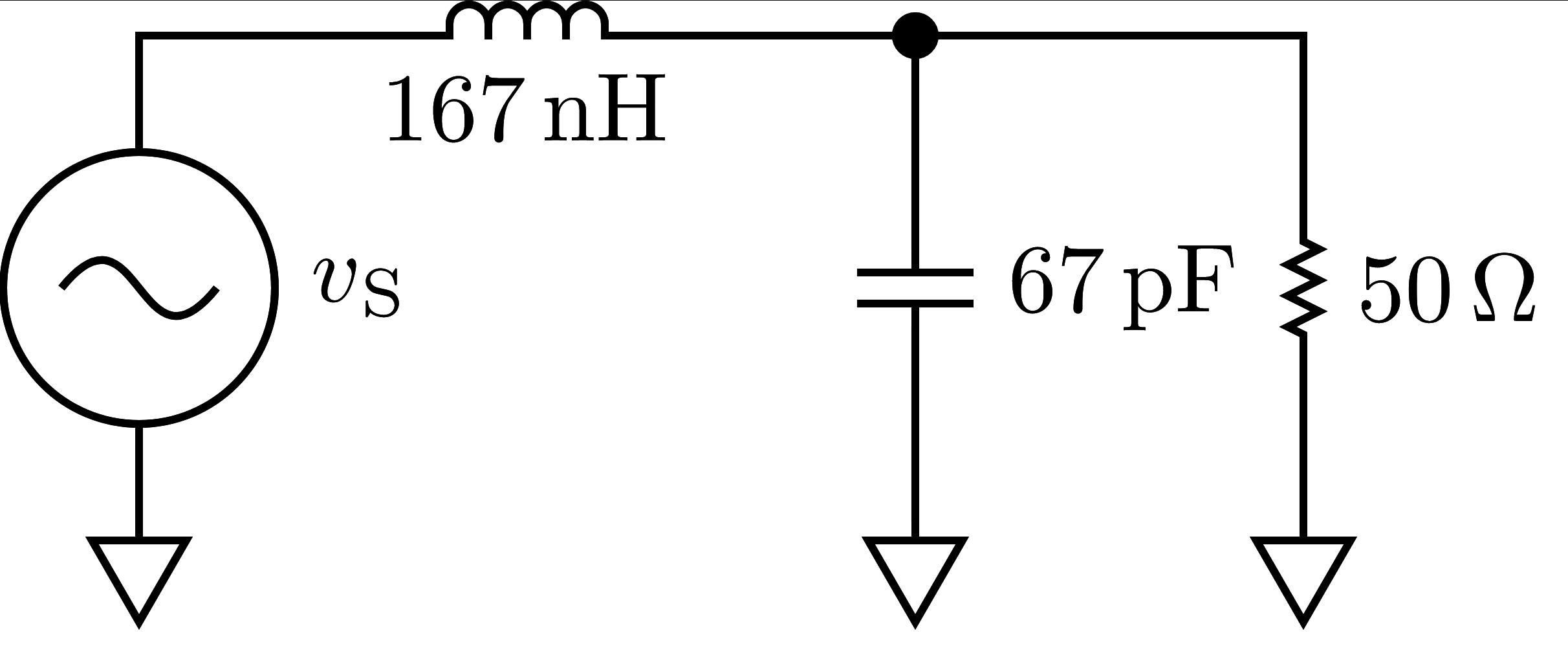Would the series inductance and shunt capacitance of a theoretical, lossless transmission line create signal attenuation? If so, how much and how could I calculate it?
Imagine an ideal, lossless transmission line connected between an ideal voltage source (0 output impedance) and a perfectly-resistive 50ohm load. The transmission line can be modeled as a set of lumped series ideal inductors and lumped shunt ideal capacitors (remember, it's lossless, so there should be no resistive values). Let's use the lumped inductance and capacitance values provided by wcalc here. This calculator gives roughly \$167\,\text{nH/m}\$ and \$67\,\text{pF/m}\$. Let's take \$1\,\text{m}\$ of this cable so that the total series inductance is \$167\,\text{nH}\$ and shunt capacitance is \$67\,\text{pF}\$. The total equivalent circuit is then shown in the schematic below.
Imagine our signal frequency to be \$1\,\text{GHz}\$.
I would then expect the gain of this circuit (the output voltage is measured across the resistor and the input voltage is the voltage from the source) to be approximately \$-53\,\text{dB}\$.
I used the following python code to calculate the gain:
import numpy as np
frequency = 1e9
omega = 2 * np.pi * frequency
inductance = 167e-9
capacitance = 67e-12
zl = 1j * omega * inductance
zc = 1j / (omega * capacitance)
z1 = zl
z2 = 1 / (1 / zc + 1 / 50)
g = 1 / (1 + z1 / z2)
g_db = 20 * np.log10(np.abs(g))
print("gain: {:.0f} dB".format(g_db))
Is this calculation correct? The signal loss seems very excessive to me. If I erred somewhere in the analysis (which I expect I did), can you point out where I went wrong?





